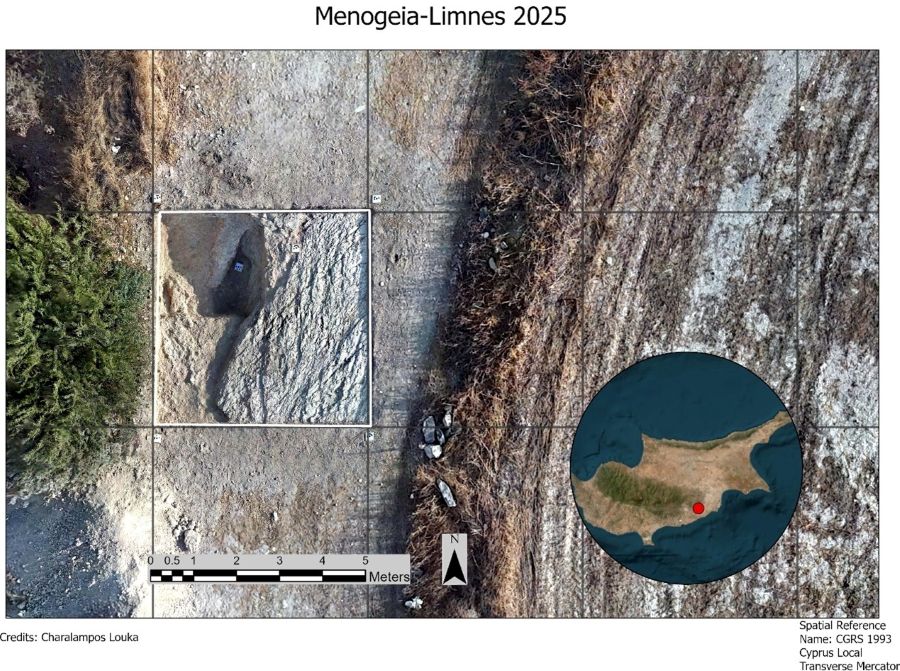
Newsroom
Archaeological work in the Kophinou–Agios Herakleios and Menogeia–Limnes areas of Larnaca has uncovered major evidence of religious and industrial activity spanning roughly a millennium. The discoveries were made during the July 2025 field season of the University of Cyprus’ “Settled and Sacred Landscapes of Cyprus” project, led by Associate Professor Athanasios Vionis and Dr. Doria Nicolaou.
Layers of worship at Agios Herakleios
Excavation around the ruined chapel of Agios Herakleios, locally known as a martyrion, focused on areas immediately south and east of the standing remains. Archaeologists determined that the small barrel-vaulted church revealed in 2025 represents a medieval construction phase erected directly over an older, three-aisled basilica dating to approximately the early 7th century AD.
The later church was supported by three arched buttresses, and debris from its collapse preserved fragments of wall painting and stone architectural pieces, offering insight into its interior decoration.
A notable find came from just outside the south wall of the martyrion, where a stone larnax from the Early Byzantine period was located containing a skeleton still in place. Additional trenches south of the structure exposed two parallel walls interpreted as part of the original basilica’s narthex. Evidence of a hearth and mortar installation suggests that this zone saw secondary uses during the later medieval era.
Pottery recovered from the collapsed medieval church ranges between the late 14th and mid-16th centuries. Combined with results from the 2024 season, the site now demonstrates uninterrupted occupation and ritual activity from the 6th through the 16th century. According to the Department of Antiquities, these excavations document Cyprus’ earliest known organized cemetery surrounding a rural basilica.

Early Byzantine production at Menogeia–Limnes
At nearby Menogeia–Limnes, investigators opened a test trench on a site identified as an Early Byzantine pottery production area. Dating to the 5th–7th centuries AD, the location yielded large quantities of misfired pottery, raw clay, and traces of fuel residues typical of ceramic manufacturing. A circular cut into the natural rock, likely part of the infrastructure near a kiln, was also unearthed. Pottery waste, along with scattered metal, glass, and charcoal, confirms the operation of a rural industrial center during this period.
Reconstructing life in the Xeros Valley
Taken together, the Kophinou and Menogeia findings illuminate how communities in the Xeros valley used the landscape for worship, burial, habitation, and craft production across both the Early Byzantine era and the later Middle Ages. The project’s results help fill the archaeological gap associated with Cyprus’ so-called “Dark Ages,” offering new insight into the region’s economic and social development over many centuries.































